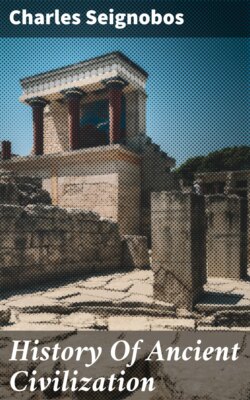Читать книгу History Of Ancient Civilization - Charles Seignobos - Страница 35
На сайте Литреса книга снята с продажи.
THE ARYANS
ОглавлениеTable of Contents
Aryan Languages.—The races which in our day inhabit Europe—Greeks and Italians to the south, Slavs in Russia, Teutons in Germany, Celts in Ireland—speak very different languages. When, however, one studies these languages closely, it is perceived that all possess a stock of common words, or at least certain roots. The same roots occur in Sanscrit, the ancient language of the Hindoos, and also in Zend, the ancient tongue of the Persians. Thus,
Father—père (French), pitar (Sanscrit), pater (Greek and Latin). It is the same word pronounced in various ways. From this (and other such examples) it has been concluded that all—Hindoos, Persians, Greeks, Latins, Celts, Germans, Slavs—once spoke the same language, and consequently were one people.
The Aryan People.—These peoples then called themselves Aryans and lived to the north-west of India, either in the mountains of Pamir, or in the steppes of Turkestan or Russia; from this centre they dispersed in all directions. The majority of the people—Greeks, Latins, Germans, Slavs—forgot their origin; but the sacred books of the Hindoos and the Persians preserve the tradition. Effort has been made[22] to reconstruct the life of our Aryan ancestors in their mountain home before the dispersion. It was a race of shepherds; they did not till the soil, but subsisted from their herds of cattle and sheep, though they already had houses and even villages.
It was a fighting race; they knew the lance, the javelin, and shield. Government was patriarchal; a man had but one wife; as head of the family he was for his wife, his children, and his servants at once priest, judge, and king. In all the countries settled by the Aryans they have followed this type of life—patriarchal, martial, and pastoral.
